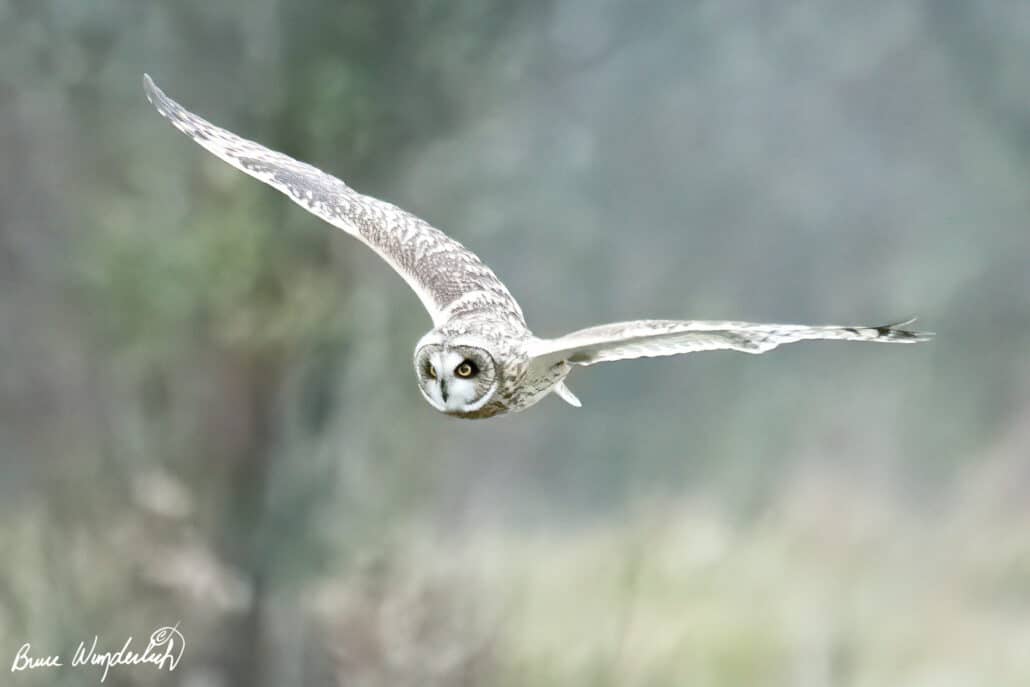
While everyone was waiting for turkey on Thanksgiving Day, I was anticipating a different bird: the short-eared owl. With a four-day holiday weekend but no family gatherings this year, I decided to head out to a nearby location I found by using eBird and by talking to other local birders. The place I visited is a reclaimed surface coal mine, now an open grassland. That’s prime hunting habitat for short-eared owls and northern harriers.
I arrived in the area in the early afternoon to scout the site. A northern harrier soon met me as it flew over a field of tall grass searching for prey. It was a male, dubbed the “gray ghost” for its beautiful silvery color. I was amazed as it flew closer to me and hovered over the ground, looking for a meal.
Photography tip: One of the most important things to remember when photographing a bird in flight is to use a fast shutter speed. The faster the bird flies, of course, the faster your shutter speed needs to be. With a bird the size of a northern harrier or a short-eared owl, I recommend that the shutter speed is not slower than 1/1000th of a second, and faster is better. Depending on the light, I would use 1/2000th or 1/4000th to freeze the bird’s wingtips in flight.
Owl photography might become my new Thanksgiving tradition!

One week later, I captured this image of a short-ear owl flitting across a road in front of an oncoming car—which made me think about the owls’ safety. Getting hit by a vehicle is a leading cause of injury or death for owls. Why would a bird with such good eyesight and hearing not be able to avoid an oncoming car or truck? When in active pursuit of prey, owls are so focused on the mouse in the grass next to the shoulder of a road that they aren’t distracted by vehicles speeding toward them. It’s a disturbing, sad situation.
Which leads to another question: Why do owls hunt so close to the road? Owls hunt close to roadways because rodents are abundant in such open areas.
And why are rodents abundant along roadways? It is because they are attracted to the trash tossed out of vehicles.
Maybe you remember Woodsy Owl’s slogan, promoted by the United States Forest Service back in the early 1970s: “Give a hoot—don’t pollute.” Litter prevention isn’t just a matter of landscape aesthetics; it’s also part of wildlife conservation.
Cleaning up our roadways protects owls, hawks, and other birds from harm. I don’t mean to insinuate that YOU are a litterbug, but please be aware of the less-obvious impacts of litter, and make it a practice to remove it if you can.
Give a hoot—don’t pollute! Save an owl!




